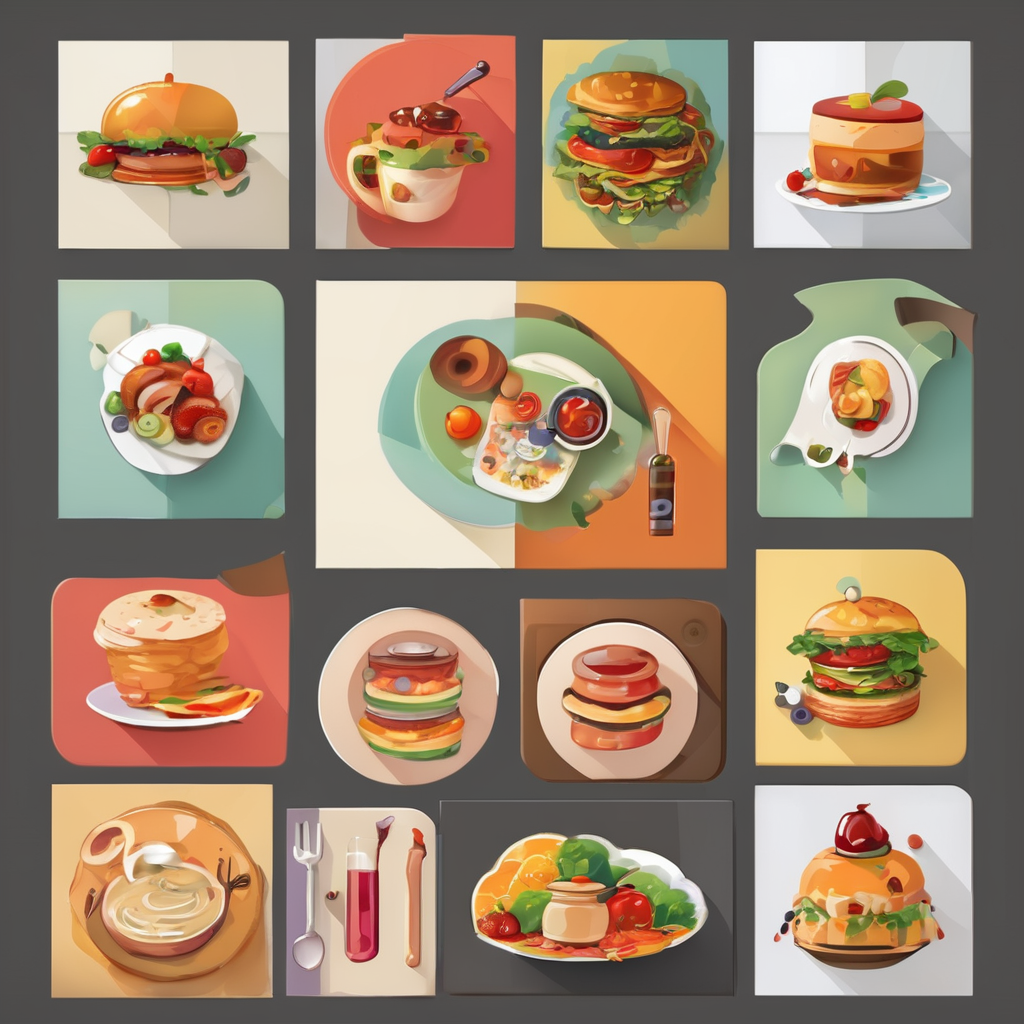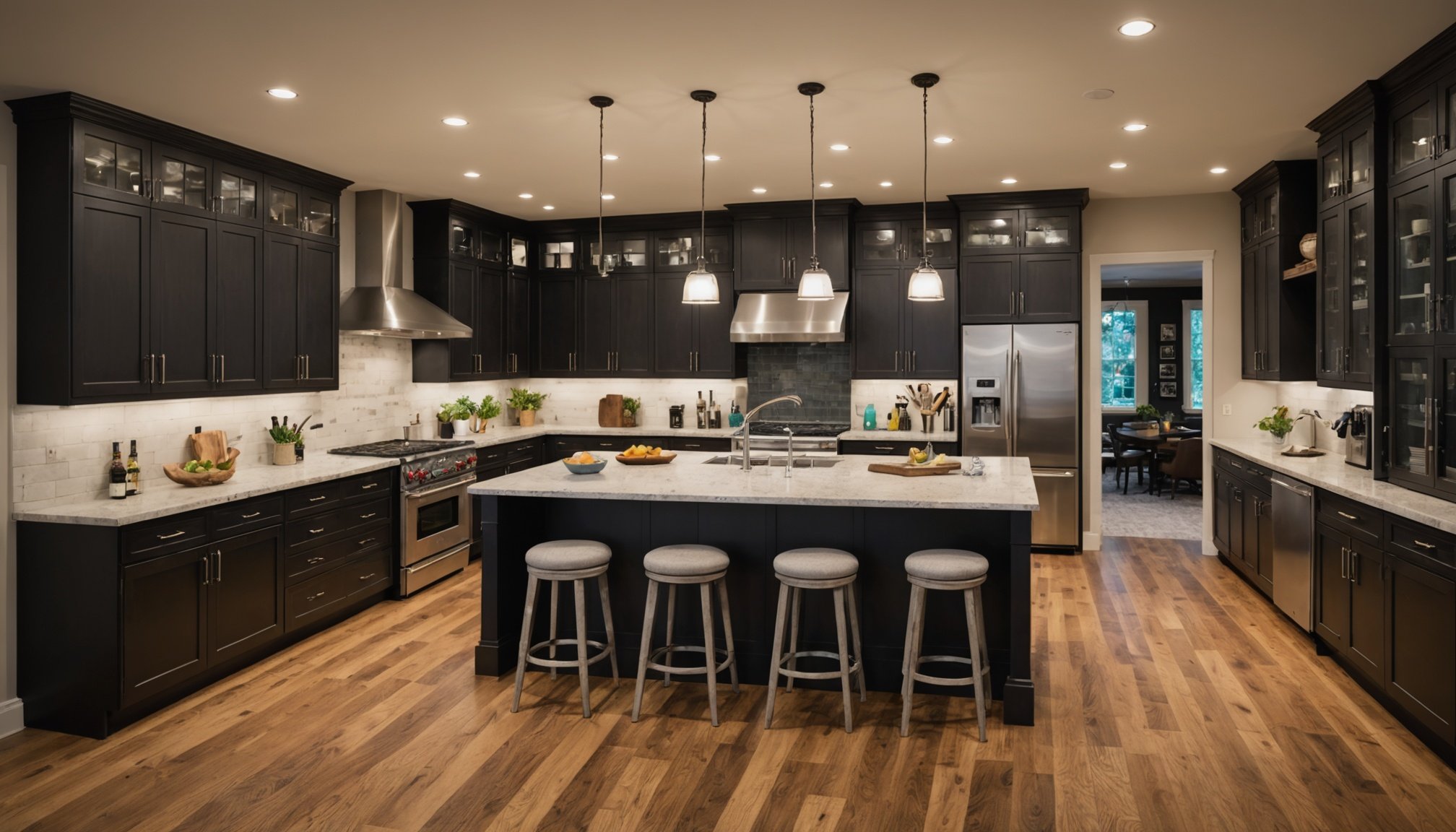Ultimate Guide to Multi-Zone Kitchen Design: Crafting Spaces for Diverse Culinary Adventures to Multi-Zone Kitchen Design
In the modern home, the kitchen is no longer just a space for cooking; it has evolved into a multi-functional hub where families gather, socialize, and create memories. The traditional “kitchen triangle” concept, while once a cornerstone of kitchen design, is now seen as outdated and restrictive by many designers. Instead, the focus has shifted to creating multi-zone kitchens that cater to various activities and needs. In this guide, we will explore the principles, benefits, and practical tips for designing a multi-zone kitchen that meets the demands of modern living.
Understanding the Limitations of the Kitchen Triangle
The kitchen triangle, also known as the “working triangle” or “golden triangle,” was a design concept developed in the 1940s to optimize efficiency in small, functional kitchens. It involves positioning the fridge, cooking station, and sink in a triangular formation to minimize walking distances and improve workflow. However, as kitchens have grown larger and become multi-functional spaces, this rigid layout often feels outdated and restrictive.
This might interest you : Create a Peaceful Haven in Your Kitchen: Expert Design Tips for Enhancing Mental Wellness and Relaxation
Gareth Davies, Design Director at Classic Interiors, notes, “The kitchen triangle was developed in the 1940s, primarily for small, functional kitchens where space was limited and efficiency was paramount…. As kitchens have grown larger and transformed into multi-functional spaces, the rigid triangle layout often feels outdated and restrictive.”[1]
Creating Zones in Your Kitchen
A multi-zone kitchen design involves dividing the space into distinct areas, each serving a specific purpose. This approach enhances functionality and flexibility, allowing homeowners to use their kitchens for various activities beyond just cooking.
Topic to read : Navigating UK Building Regulations: The Ultimate Kitchen Renovation Handbook
Cooking Zone
The cooking zone is the heart of any kitchen, where the magic happens. This area should be equipped with high-quality appliances, ample counter space, and efficient storage solutions. Consider integrating multi-use appliances, such as taps that provide hot, cold, boiling, filtered, and sometimes sparkling water, to reduce clutter and enhance functionality[3].
Prep Zone
The prep zone is where meal preparation takes place. It should be well-lit, with task lighting to illuminate countertops and work areas. Incorporate storage solutions like pantry bins, dividers for cookie sheets and cutting boards, and double-deck cutlery dividers to keep utensils and ingredients organized[2][4].
Dining Zone
For many families, the kitchen is not just a cooking space but also a dining area. A kitchen island or peninsula can serve as a social hub, providing a spot for casual dining or breakfast bars. Ensure that the dining zone is well-lit and comfortably spaced to facilitate social interaction[3].
Relaxation Zone
In modern kitchens, a relaxation zone can be a cozy corner where family members can enjoy a quiet cup of coffee or help kids with homework. This area can be created with comfortable seating, soft lighting, and perhaps a small reading nook.
Practical Storage Solutions for Multi-Zone Kitchens
Effective storage is crucial in a multi-zone kitchen to maintain organization and functionality. Here are some practical storage solutions to consider:
- Divide Your Cookie Sheets & Cutting Boards: Use metal dividers or free-standing racks to store cookie sheets and cutting boards on their sides, preventing them from stacking and becoming disorganized[2].
- Double Trash Can Pull-Out: Install a pull-out trash can cabinet that fits two bins, one for regular trash and one for recycling, along with a built-in paper towel holder[2].
- Double Deck Your Cutlery: Use two-tiered cutlery dividers to maximize drawer space, keeping everyday silverware in the top tray and less frequently used items below[2].
- Group Your Foods with Pantry Bins: Organize your pantry with large, medium, and small bins, and incorporate revolving turntables for spices and cooking oils[2].
- Add Corner Drawers: Instead of lazy Susans, consider corner drawers that fully extend to make the most of the space[2].
- Hide a Pull-Out Tray: Use pull-out trays in deep kitchen drawers or cabinets to create more usable storage space for items like desk supplies or less frequently used kitchen tools[2].
Lighting in Multi-Zone Kitchens
Lighting plays a critical role in creating a functional and inviting kitchen space. Here are some tips for lighting your multi-zone kitchen:
Task Lighting
Task lighting is essential for cooking and prep zones. Install under-cabinet lighting, pendant lights over islands, or LED strips to illuminate work areas and reduce eye strain.
Ambient Lighting
Ambient lighting sets the overall mood of the kitchen. Use ceiling fixtures, wall sconces, or natural light to create a warm and welcoming atmosphere.
Accent Lighting
Accent lighting highlights specific features or areas, such as a kitchen island or a dining zone. Use spotlights or decorative fixtures to draw attention to these areas.
Materials and Style in Modern Kitchens
The choice of materials and style can significantly impact the look and feel of your multi-zone kitchen.
Eco-Friendly Materials
Consider using eco-friendly materials like reclaimed wood, bamboo, or sustainable countertops to create a kitchen that is both stylish and environmentally conscious.
Bespoke Kitchen Designs
A bespoke kitchen design allows you to tailor your space to your specific needs and style. From custom cabinetry to unique lighting fixtures, a bespoke design can make your kitchen truly unique.
Commercial Kitchen Inspiration
Commercial kitchens often feature efficient layouts and high-quality appliances. Incorporating elements like stainless steel countertops, industrial lighting, or professional-grade appliances can add a touch of sophistication to your home kitchen.
Table: Comparing Different Kitchen Layouts
| Layout | Description | Advantages | Disadvantages |
|---|---|---|---|
| Galley (Corridor) Kitchen | Narrow kitchen with two parallel counters | Efficient, easy to navigate | Can be crowded with multiple users |
| Peninsula Kitchen | Galley kitchen with a dead end, often opening into a dining area | Opens up the house, central location | Limited counter space |
| U-Shaped Kitchen | Three-sided kitchen with a central island option | Ample counter space, efficient workflow | Can feel enclosed if not well-designed |
| L-Shaped Kitchen | Two adjacent counters forming an L shape | Flexible, avoids normal room traffic | May lack central workspace |
Case Study: Designing a Multi-Zone Kitchen
Let’s consider a real-world example of how to design a multi-zone kitchen in a modern home.
Scenario
A family of four is renovating their kitchen to create a space that is both functional and social. They want a cooking zone with high-end appliances, a prep zone with ample storage, a dining zone with a breakfast bar, and a relaxation zone for casual seating.
Solution
- Cooking Zone: Install a professional-grade range, a large sink, and ample counter space. Use task lighting to illuminate the cooking area.
- Prep Zone: Create a well-lit area with a large island that includes storage bins, dividers for cookie sheets, and a double-deck cutlery divider.
- Dining Zone: Incorporate a kitchen island with a breakfast bar and comfortable seating. Ensure this area is well-lit with ambient lighting.
- Relaxation Zone: Designate a cozy corner with soft lighting, comfortable seating, and perhaps a small reading nook.
Tips for Creating Your Dream Kitchen
Here are some final tips to help you create your dream multi-zone kitchen:
- Consider Your Lifestyle: Think about how you use your kitchen and what activities you want to accommodate. This will help you design zones that meet your specific needs.
- Use Subtle Zoning: Divide your kitchen into zones without interrupting the flow of light. Use different flooring, lighting, or visual dividers to create distinct areas[3].
- Invest in Quality Appliances: High-quality appliances not only enhance functionality but also add a touch of sophistication to your kitchen.
- Think About Storage: Effective storage is key to maintaining a clutter-free and organized kitchen. Invest in bespoke storage solutions that fit your needs.
- Lighting is Key: Lighting can make or break the ambiance of your kitchen. Ensure you have a mix of task, ambient, and accent lighting to create a welcoming space.
Designing a multi-zone kitchen is about creating a space that is not just functional but also inviting and adaptable to various activities. By understanding the limitations of traditional kitchen designs, creating distinct zones, and incorporating practical storage solutions and thoughtful lighting, you can craft a kitchen that truly becomes the heart of your home.
As Gareth Davies aptly puts it, “We need to shift our focus from strictly adhering to the triangle to creating zones that enhance how we live and interact in our kitchens. This means designing areas for cooking, prepping, dining, and relaxing, all within the same space.”[1]
By following these guidelines and tips, you can create a dream kitchen that is both beautiful and functional, perfect for all your culinary adventures.

